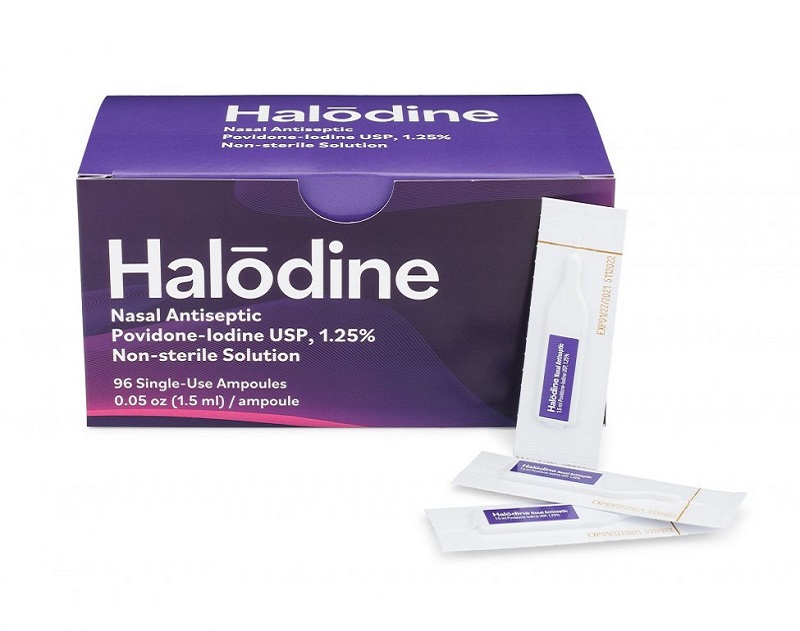Lab tests shows the nasal solution Halodine inactivates COVID-19, suggesting it could be used to stop spread of the coronavirus.
A commercially available nasal antiseptic solution “inactivates” COVID-19 just 15 seconds after the coronavirus is exposed to it, effectively preventing the infection from developing, according to a study published Thursday by JAMA Otolaryngology-Head & Neck Surgery.
By inactivating the virus, the antiseptic nasal rinse (a povidone-iodine solution administered in the nostril) also would help prevent those infected from spreading it to others, the researchers said. The findings are based on lab experiments designed to assess how the rinse affects new coronavirus cells “in vitro,” or in test tubes. Researchers have yet to study the rinse in humans with COVID-19, although a small phase 4 clinical trial is scheduled to start in October.
A low dose povidone-iodine nasal antiseptic inactivates [COVID-19] after only 15 seconds of contact time, study co-author Dr. Samantha Frank told UPI. Prior studies have shown safety of the rinse for both acute and chronic use, so we anticipate broad use of this treatment to prevent viral transmission of COVID-19, she said. Dr. Samantha Frank noted that low dose povidone-iodine at concentrations of 1.25% and below has been demonstrated to be safe for use in the nose and mouth for up to a period of months, adding that she and her colleagues have used the rinse. “Given the timely nature of this treatment, it is appropriate for use at this time at very specific doses,” she stressed.
The nasal rinse, sold under the brand name Halodine, is used by healthcare workers to prevent the spread of infection. It is also available as an oral rinse. In addition to COVID-19, the solution also has had similar effects on other coronaviruses, including SARS, or sudden acute respiratory syndrome, and MERS, or Middle Eastern respiratory syndrome, according to Frank and her colleagues. For this study, the povidone-iodine nasal antiseptic rinse they used had “low-dose” concentrations — 0.5%, 1.25%, and 2.5% — of the active ingredients and still was effective in containing COVID-19 virus cells, they said. The active ingredients are safe for regular use at these concentrations, the researchers said. Studies of the product in people exposed to COVID-19, however, have not started.


